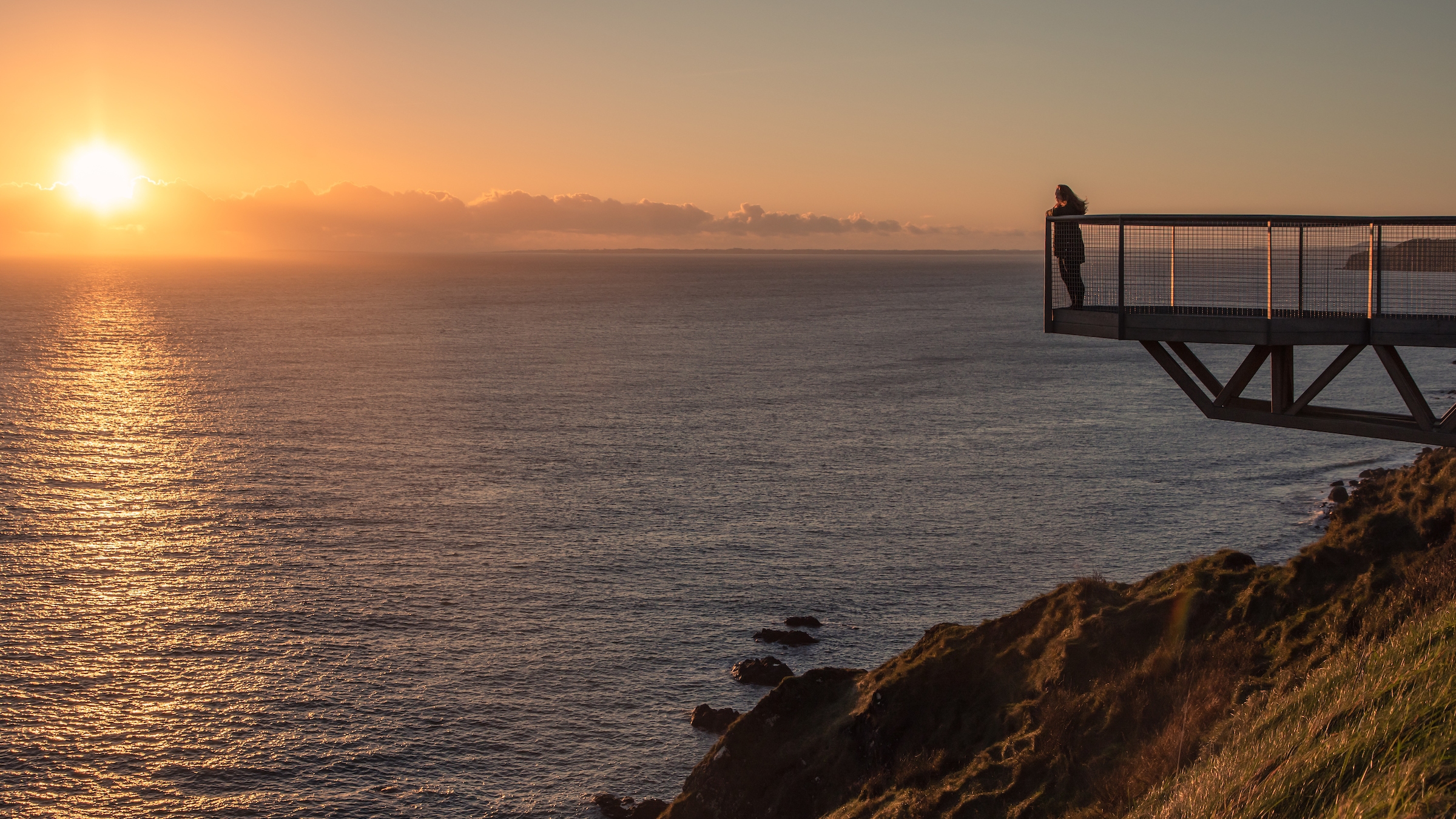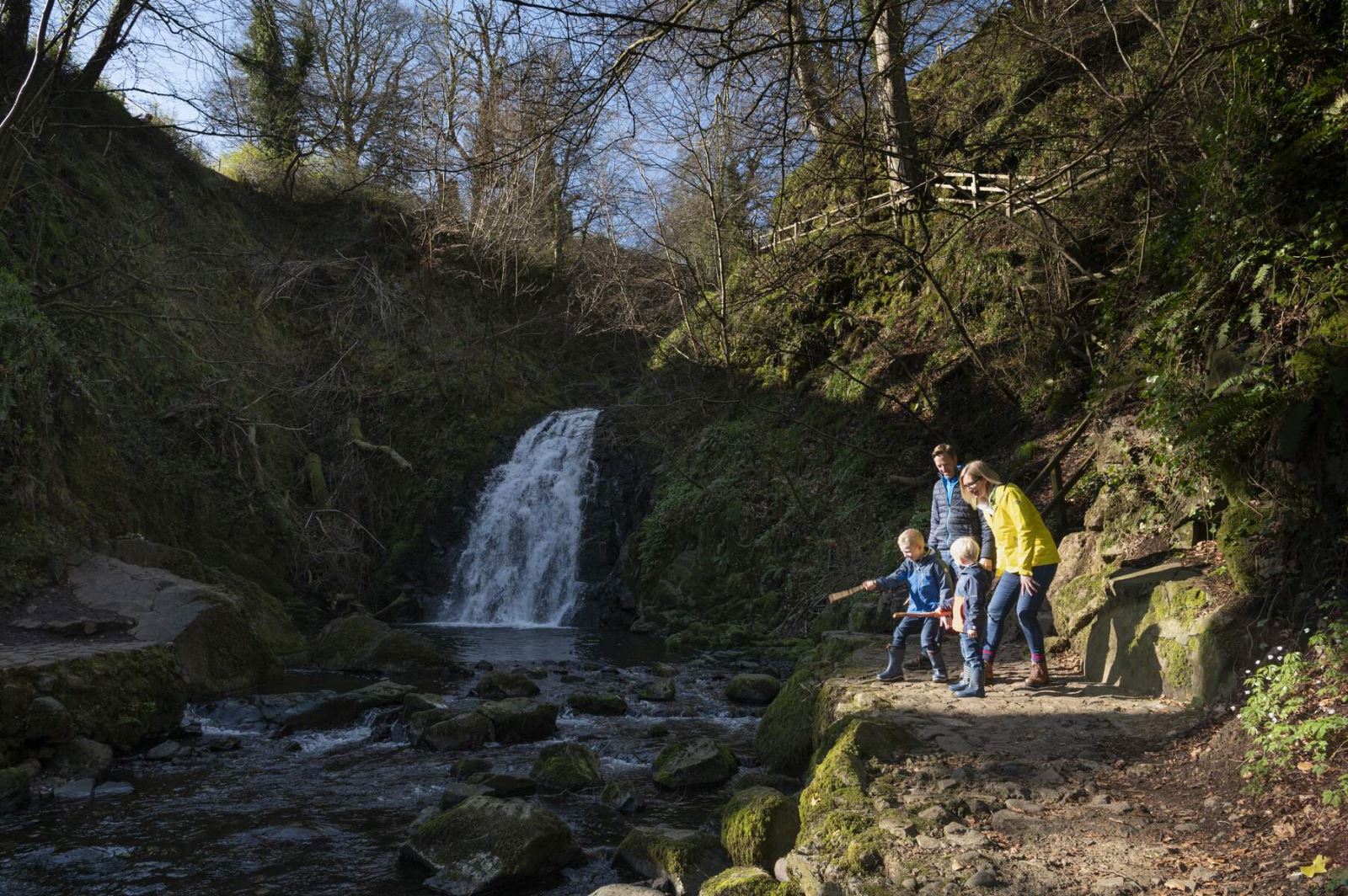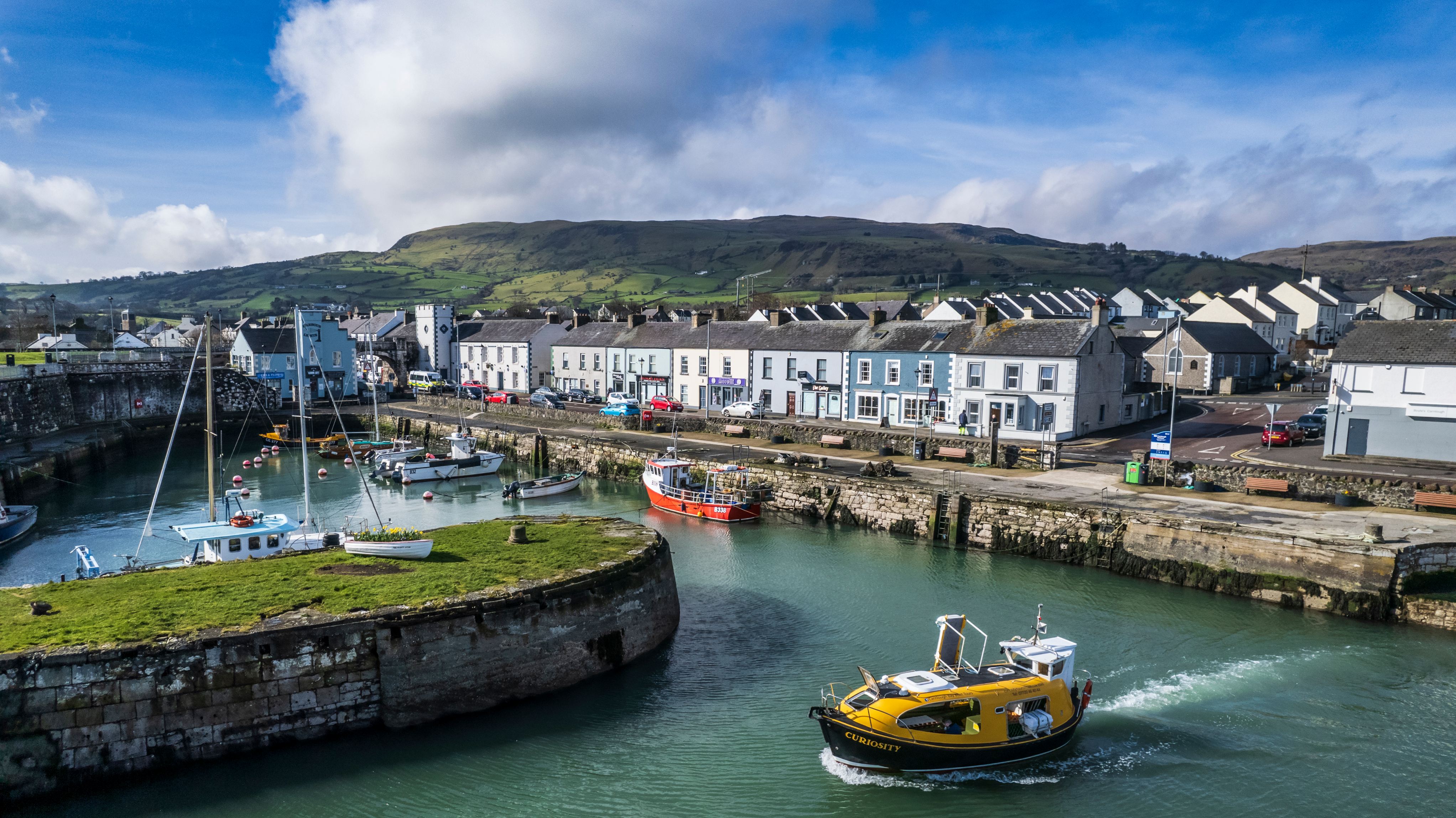The Causeway Coastal Route that twists and turns along the ancient County Antrim coastline is quite simply a journey unlike any other. A pathway so filled with legends, living history and breath-taking landscapes it’s been voted Best in Travel 2018 by Lonely Planet, the world’s leading guidebook.
.jpg)
For centuries, it was easier for locals to sail the few miles to Scotland than to travel across the difficult terrain towards Belfast Lough. Then the visionary engineer William Bald blasted the coastal road out of the cliffs between 1832 and 1842. That triumph of Victorian engineering not only opened up this uniquely beautiful and rugged coastline, it also created one of the world’s most enthralling road trips.
That history of isolation has left its mark. A culture separate from the rest of Ireland developed its own unique customs that survive to this day – the way people speak, their language, music, myths and folklore. A place and a people shaped by sea and stone.
Here’s our guide to the highlights of our extraordinary coast. Sample them at your leisure.
Highlights
-
Step inside Carrickfergus Castle, an imposing medieval fortress.
-
Experience the unique Gobbins cliff walk.
-
Sample a traditional afternoon tea at Ballygally Castle.
Travel time
If you were to visit all the stops on this itinerary, you’d be driving for a total of:
2 hours
Carrickfergus
Allow 2 hours
(1).jpg)
Begin with breakfast in one of the oldest settlements in Ireland – the medieval and wonderfully walled town of Carrickfergus and take a guided tour of its infamous castle built in 1180.
It stands on the rocks where Fergus, legendary king of Scotland, ran aground and perished, lending his name to the town – the ‘rock of Fergus’.
The stronghold was built to secure the Lough by the Anglo-Norman conqueror, John de Courcy, and you’ll learn how its ramparts, cannons and staircase ‘trip steps’ have done so for well over 800 years against Scots, Gaelic Irish, French and can you believe it even American attacks.
Whitehead, Islandmagee & Blackhead Lighthouse
Allow 2 hours

Drive five short scenic miles along the coast road to Whitehead, an idyllic Victorian seaside resort.
Red brick terraced houses march down the hillside to the original Victorian train station on the shore of the Irish sea. This is now the Whitehead Railway Museum, where you can get up close to magnificent steam locomotives from the Railway Preservation Society of Ireland collection.
From here you can begin a loop around the Islandmagee peninsula, popping into Port Muck or taking a plunge into Brown’s Bay. Alternatively, take a stroll along the well-trodden sea path towards Whiteheads’ Blackhead Lighthouse.
Whitehead, Islandmagee & Blackhead Lighthouse | Shaped by Sea and Stone
It passes underneath towering basalt cliffs, where yawning caves open onto the sea. The path rises to a clutch of buildings where the lighthouse keepers once stayed, and the iconic lighthouse itself.
It presides over Belfast Lough, the North Straight and the distant hills of Scotland's coastline. Blackhead Lighthouse is paired with a twin at Mew Island, off the coast of Co Down, and together they protected shipping on the approach to Belfast.
As you gaze over distant ships just imagine the spectacle if you had been standing outside the restored lighthouse keepers’ cottages on April 2nd, 1912, as the RMS Titanic came steaming out of the Lough on her maiden voyage.
There was once a fog horn here, and it was sounded in celebration.
The Gobbins Cliff Path
Allow 3 hours

The Gobbins Cliff Path opened in 1902 to rave reviews – “it has no parallel in Europe as a marine cliff walk” – and was five times as popular as the now world-famous Giant’s Causeway. Since the path was reimagined in 2015, a new generation of visitors have come to the same conclusion.
Venture onto the suspended walkways that hug the cliff face and span sea-carved crevasses. Experience, up close, the unique geology and biodiversity, the birds and beasts and the ever-changing flora and fauna along the cliff face. Weave your way along basalt cliffs, through tunnels and hidden caves where past generations of smugglers hid their loot and present generations of wildlife call home.
Lunch at The Dairy & Glenoe Waterfall
Allow 1½ hours

Head to the village of Glenoe, a tiny hidden gem in the area and home to a very quiet forest with a very accessible and very beautiful waterfall. A site so picturesque that selfies are encouraged and so precious it falls under the protection of the National Trust. While you're there pop into The Dairy, an award winning bistro, butchers and farm shop, for something to eat in their restaurant or outdoor dining area.
Larne Waterfront & Antrim Coast Road
Allow 1 hour
.jpg)
Re-join the coast road and head north to the ancient seaport of Larne. Walk the Promenade, a narrow path to an Irish round tower built in 1887 to commemorate James Chaine, who developed the sea route from Larne to the Scottish mainland.
Take a stroll in the other direction to visit Waterloo Bay. Notice the rocks below the promenade? They look like any old rocks, but in fact they're a window onto the world at the dawn of the Jurassic period. Marine fossils are frozen in the stone, including a near complete ichthyosaur skeleton. There is also evidence for a violent earthquake and tsunami that devastated Britain and Ireland 200 million years ago.
Another small memorial sculpture here commemorates William Bald – the man responsible for the amazing Antrim Coast Road you’re following.
His vision becomes clear as the scenery begins to change beyond Larne.
The road hugs the water’s edge, crystalline waves lap at ancient shores, and Scotland’s distant hills are visible on all but the wildest days.
That wildness is everywhere and it’s wonderful.
Remarkable rock formations rise on both sides, headlands loom around each bend, and manmade arches convey you through weathered cliff faces as you continue north.
Ballygally & Afternoon Tea
Allow 1 ½ hours
You’ll make many unexpected discoveries on this trip, not least a host of secluded, sandy beaches – uncrowded even in summertime. About four miles from Larne you’ll reach the village of Ballygally.
You can surf and paddleboard off the golden beach, or simply take in the views and sea air. Retire to the family-owned Ballygally Hotel for a well-deserved afternoon tea by a roaring peat fire.
This is a hotel known for its history, its hospitality and its legendary hotel ghost.
Glenarm & Carnlough
Allow 1 ½ hours

Now you’re travelling through the foot of the Glens of Antrim, where glacial valleys sweep down to the sea.
Only another seven miles along the meandering coast road and you’ll encounter colourful houses in the hamlet of Glenarm.
Stretch your legs and take in some history on the Layde Walk. It follows the path of a 19th-century waterway that powered a limestone crushing mill.
It will take you to the highest point in the village and allow you to take in views of spectacular Glenarm Castle.
This is the ancestral home of the McDonnells, Earls of Antrim, an important fortress during the long struggles with the McQuillans and the O'Neills. The Walled Garden here grows excellent produce, much of it sold in the tearooms. Sample delicious Glenarm smoked salmon and locally-grown beef.
Just minutes along the road, you’ll round another craggy headland and enter a beautiful bay occupied by the quaint fishing village of Carnlough.
Here, you can take to the water for a sea adventure aboard Davy Smyth’s boat, Curiosity.
It’s moored in a high stone-walled harbour, by stone steps made famous by Arya Stark in Game of Thrones®. You can see the chair Maisie Williams sat in between takes at the nearby Harbourview Hotel - signed by star herself!








